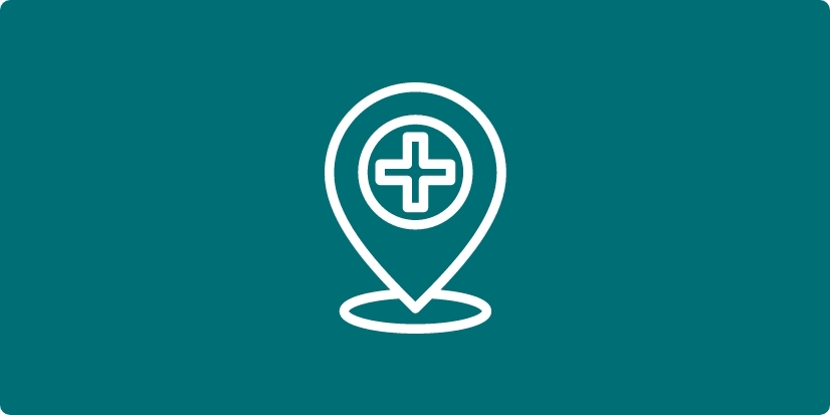Women's Imaging Services
Services Tailored to your Unique Needs
Call 504.897.8885 to schedule an appointment.
Designed by a team of highly trained breast specialists, the Touro Women’s Imaging Center is devoted exclusively to providing a comprehensive array of state-of-the art women's imaging and breast care services, including the diagnosis of breast cancer.
At Touro, we offer a wide range of breast health services performed by experts in imaging, breast cancer, breast reconstruction surgery, radiation and medical oncology, and physical therapy. These specialists take an integrated, multidisciplinary approach to care and treatment that benefits the patient.
Mammography
A mammogram – an X-ray of the breast – is an important tool to detect and diagnose breast cancer. You may undergo a mammogram whether or not you notice any problems with your breast. Thanks to advancements in technology, mammograms today pose little radiation risk but offer high-quality images.
Mammograms can show:
- Calcifications: Tiny mineral deposits that may indicate breast artery aging, old injuries, or inflammations
- Masses: Could be caused by a cyst, benign breast conditions, or breast cancer
Breast MRI
An MRI is a diagnostic test that uses a large magnet, radio waves, and a computer to create images of structures and organs. MRI is often used to alongside mammography as a tool to diagnose or screen for breast cancer.
You may undergo a breast MRI to:
- Evaluate abnormalities detected by a mammogram
- Locate breast cancer not detected by other tests
- Check for cancer in women who have breast implants or scar tissue that could affect mammogram results
- Detect small abnormalities not seen with other methods
- Evaluate the size and location of breast cancer lesions
- Determine the most effective breast cancer treatment
- Detect the spread of breast cancer
Breast biopsy
During a breast biopsy, a portion of breast tissue is removed to check for cancerous or abnormal cells. Depending on your condition and the goal of the biopsy, the procedure can be done as a fine needle aspiration biopsy, a core needle biopsy, or a surgical biopsy.
A breast biopsy may be performed to:
- Evaluate a palpable lump or mass
- Investigate something observed during a mammogram, such as calcifications or a cyst
- Evaluate nipple abnormalities
- Determine if a breast lump or mass is cancerous
During a needle breast biopsy, your doctor will use either X-ray or ultrasound guidance to locate the lump or mass being tested. An anesthetic will be used to numb the breast and prevent pain. You may feel a bit of pressure while the doctor takes a sample of tissue through the needle.
Pelvic ultrasound
To assess the organs and structures in your pelvis, a doctor may perform a pelvic ultrasound, which uses a transducer to reflect an image of your pelvis on a computer screen.
The ultrasound may be performed using one or both of two methods:
- Transabdominal: Transducer is used on top of the abdomen
- Transvaginal: Transducer is inserted into the vagina
The method or methods your doctor uses will depend on the reason you are receiving the ultrasound.
A pelvic ultrasound may be used to diagnose and treat the following conditions:
- Abnormalities in the uterus
- Fibroid tumors, masses, cysts, and other tumors in the pelvis
- Pelvic inflammatory disease
- Postmenopausal bleeding
- Infertility evaluation
- Pregnancy occurring outside of the uterus
Bone densitometry
Bone densitometry is used to measure your bones’ mineral content and their density. This measurement can indicate decreased bone mass – wherein bones are brittle and likely to break or fracture easily – and diagnose osteoporosis. During a bone densitometry test, your doctor will assess the bones of your spine, your pelvis, your lower arm, and your thigh.
Though a standard X-ray can detect weakened bones, it may be too late. Bone densitometry testing can diagnose weak or brittle bones earlier on when treatment is still possible.
The test determines your bone mineral density (BMD), which will be compared with two norms: Healthy young adults (your T-score) and age-matched (your Z-score). Your doctor can use your T-score and Z-score to determine whether you have osteoporosis, or low bone mass. With that information, he or she can recommend further tests and develop a treatment plan to keep your bones healthy.
Breast health navigators
At Touro, we have specially trained breast health navigators who can coordinate your clinical, educational, and supportive needs if you are facing a potential breast cancer diagnosis or have been diagnosed. These nursing professionals are available to help you navigate the unfamiliar territory of life with breast cancer. They work hand-in-hand with radiologists and technologists to ensure you receive quality care for the duration of your journey and can help you schedule appointments and tests, interpret and understand results, and remove any barriers to care.

